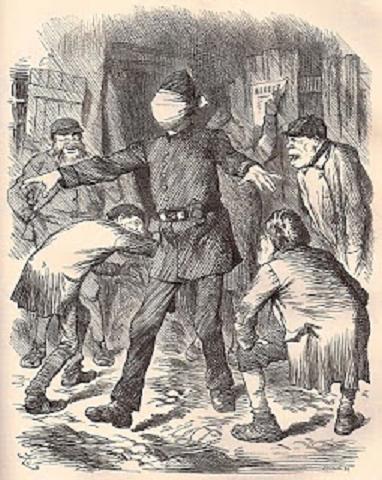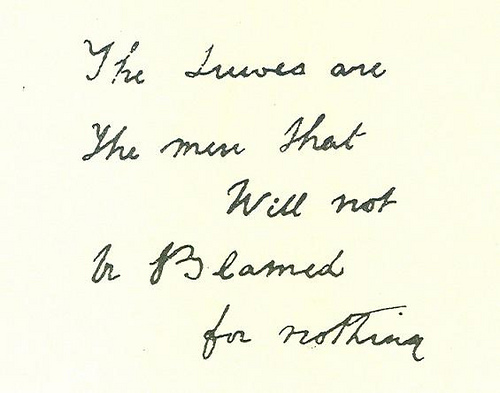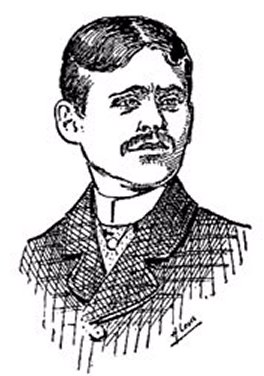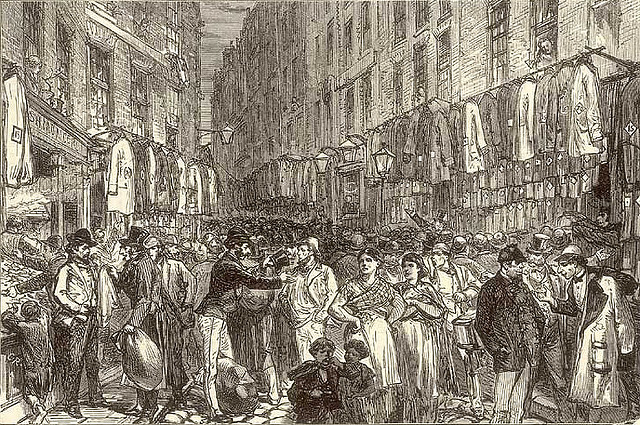|
This past Sunday, I felt honored to be part of the recording of Rippercast
with host Jonathan Menges and a quite varied array of guests, including
David Lindblad, host of his own radio podcast, who is a long-time student
of the Ripper case but not a published expert, Robert McLaughlin, author
of The First Jack the Ripper Victim Photographs, researcher Mike
Covell of Hull, Yorkshire, UK, along with Martin Fido, veteran Ripper expert
and co-author of The Complete Jack the Ripper A to Z with Paul Begg
and Keith Skinner.
The episode, no. 51, is a wide-ranging discussion of various aspects of
the Ripper case given the apt title “The Blind Man’s Buff” given that the
police of the day were all at sea about the case, without a clue to the
identity of the killer, as well satirized in the magazines of the time.

“Blind Man’s Buff,” a caricature for Punch, or the London Charivari, by
Tenniel, one of a number of wonderful satirical cartoons he did for Punch.
See “John Tenniel & Jack the Ripper.”
****************
One of the topics that we discussed during the chat was the controversial
and much-debated “graffito” found in a tenement doorway to Wentworth Model
Dwellings in Goulston Street in the early morning of 30 September 1888
within minutes after fourth canonical Ripper victim Catherine Eddowes
had been found murdered and grievously mutilated in a dark corner of Mitre
Square, Aldgate. As we noted in Rippercast, the doorway is some streets
east of Mitre Square, which is City of London police territory, while
Goulston St. is Metropolitan Police territory, the City-administered part
being more or less in the ancient limits of the original city within the
Roman/medieval walls of the community and a bit beyond those walls.
The words were found near one of the rare true clues in the case, a piece
of the apron worn by Eddowes that the killer had cut from her corpse and
that exhibited both her blood and fecal matter.
The words were controversially expunged from the wall on the orders of Met
Police Commissioner Sir Charles Warren, without first being photographed.
As per a transcription made by the Met, they read as follows:

It was noted recently in a posting on the Casebook message boards here
by Neil Bell that the transcription by City Police detective Halse reads at
variance to the version in the Met files shown above, viz, “The Juwes
are not the men that will be blamed for nothing”. Bell noted he personally
prefers to trust Halse’s version.
Martin Fido made the point in Rippercast that both versions contain
the Cockney double negative. Personally, I think whichever one chooses
the “message” doesn’t make much sense and so doesn’t seem to convey much.
Are the Jews being blamed? Or are they not being blamed? Let’s forget
the Royal Conspiracy theory, probably bogus, that Warren asked for the words
to be erased from the wall because he was a Freemason and they referred
to the three “Juwes” of Solomon’s Temple. Of course, you are free to
believe that was what occurred. But it seems more likely that as he said at
the time, the police commissioner ordered the words removed because he
was afraid of an anti-semitic riot. Indeed, within a few hours of the discovery
Jewish merchants would congregate there for the famous “Petticoat Lane”
market that continues to this day–although the traders now are
likely to be from Bangladesh rather than Jewish. In truth, there’d
been unrest in the East End before the murders over the murder of a land-
lady by a Jewish umbrella maker, Israel Lipski, who was executed in 1887,
and Warren himself had broken up the socialist gathering in Trafalgar
Square in November 1887, so he legitimately was afraid of a similar fracas.
Fido remarked that the graffito could have been left by someone who felt
they had been cheated by a Jewish tradesman. A legitimate theory, I feel,
because we might never know for certain if the words were left by the
killer.

Israel Lipski
Let me mention to you a little anecdote. A few evenings ago, I was
arriving home by cab from my work in Washington, D.C., to my Baltimore
apartment building near Johns Hopkins. I get a cab from Penn Station up
North Charles Street to my home. The fare is usually around eight bucks
or so and I always like to tip the cabbie a dollar. Now, because it was
starting to rain heavily, I was wrestling to get my umbrella ready,
along with struggling with all my bags of papers, books, mags,
music, lunchbag, etc. You can picture the scene. The driver was, as is
often the case here, of Arab or East African extraction. Well, I got nine
dollars out of my wallet, four ones and a five, thought I handed the sum
to him and told him it included his tip, then got ready to exit into the
downpour. He said to me, “Sir, this is only four dollars!” I was astounded,
blurted out, “Didn’t I just hand you nine dollars?” We then both noticed
that the five dollar bill was still in my hand. The joke was on me. . .
but you can see how these things can happen. I might well have been tadacip by cipla
convinced the man tried to cheat me, when he did not. As in 1888 in
the East End of London. . . and similarly in the United States in 2012!
Do you think the graffito is the real thing? What are your thoughts?
What do you think it means? Was it written by the killer or was it
just a stray piece of graffiti unrelated to the case? Hmmmmm?

Earlier Nineteenth Century View of Petticoat Lane Market, Spitalfields, London
|




Recent Comments